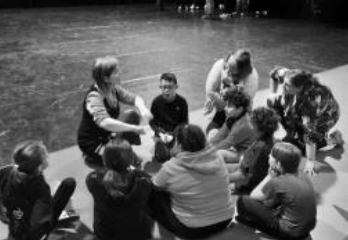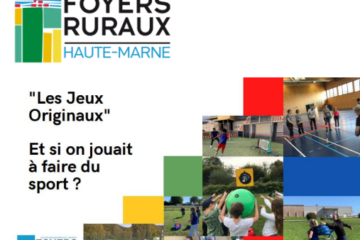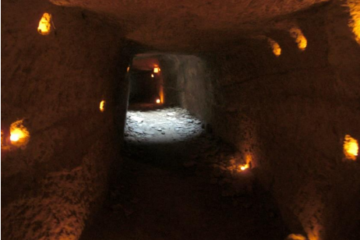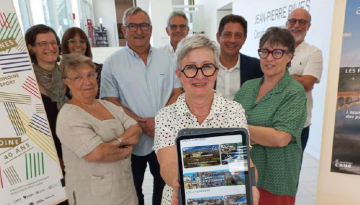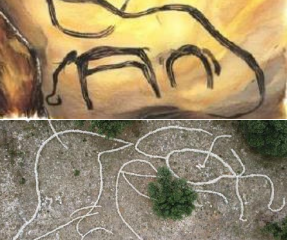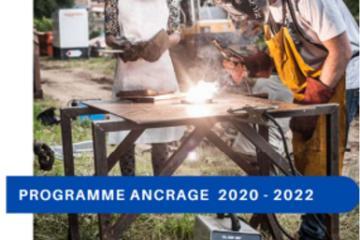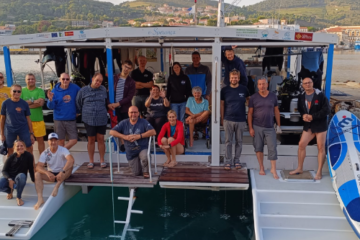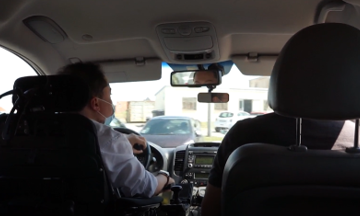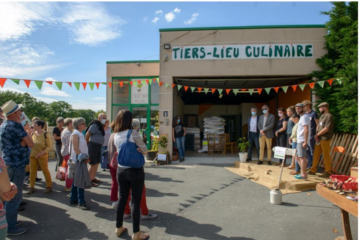France
Introduction
Culture, a space to mediate for a comprehensive approach to disability mainstreaming without stigma. Empowering everyone – to be able to freely attend a show and experience the show – to be able to put themselves on stage Empowering ourselves with material, human and educational means so that our structure is efficient in welcoming difference, exemplary in order to inspire others to do the same. Capitalize on this experience to support other structures that may wish to take ownership of the initiative
Presentation of the project
Location: Pays de Langres (department 52) Background: Out of 66 million French people… about 12 million are disabled, 1.5 million are visually impaired and 850,000 have reduced mobility. As part of a Tinta’Mars event (festival of 60 shows in the territory of the country of Langres in March), the association Tinta’Mars decided to put in place actions facilitating the integration of people with disabilities in this festival so that they become actors also of this festival by co- constructing shows so that they are more accessible in their reception, diffusions, creations, and communications Objectives: To accompany the creation, through technical and artistic accompaniment and the contribution in co-production of an artistic creation written with and for people with disabilities. Improving our dissemination through research and programming of adapted shows Training employees and volunteers in the support of persons with disabilities in partnership with local organizations (APF – France Handicap, Langres signes, etc.); Investing in adapted equipment (removable ramps, magnetic loops, reception kiosks, etc.) that will then be made available to associations in the Pays de Langres for their events; Choosing and creating adapted communication tools; Effective and expected implementation:
- INVESTMENT Hardware investment “Disabled” device Using a mobile application or telecommunication box, the person can, if he or she so wishes, self-identify and be directly supported by the Tinta’Mars team. During 2023, Tinta’Mars also plans to purchase hearing loops and accessible ramps for people with hearing impairments or hearing aids. All of these facilities can be lent to the structures and actors in the territory that demonstrate the need for them. Since 2021, the two employees of Tinta’Mars have been training in the reception of persons with disabilities and the tools of mediation with these persons. In October 2022, Tinta’Mars organized two two-day training sessions on best practices for accommodating persons with disabilities. It involved volunteers from Tinta’Mars as well as from other associations in the area. 14 people from 5 associations benefited from it.
- CREATION In 2022-2023 As part of the residence of the Compagnie Act2 – Catherine Dreyfus, a group of 7 persons with disabilities accompanied by the Bois l’Abbesse and 6 classes from the Pays de Langres participated in a work of writing and dancing. The project culminated in a day of presentation on March 30, 2023.
3. BROADCASTING Welcoming people with disabilities obviously involves choosing a program of adapted shows. This does not necessarily mean that every work is accessible to all, but that diversity meets the needs of the whole. We have also chosen to host plays featuring professional artists with disabilities and to put in place mechanisms to make shows accessible.
3 Shows involving people with disabilities
5 Shows accessible to the deaf and hard of hearing
2 Accessible Shows for Blind and Visually Impaired People: Disability Groups Hosted 99 People with Disabilities Hosted as Part of the 35th Edition of the Tinta’Mars Festival (2023) They came alone or were accompanied by 7 support structures.

As part of the festival During the 35th edition of the festival, Tinta’Mars organized two workshops to raise awareness of disability:
· a blind discovery workshop on the stage and decor of the show “Le Mensonge”: 72 students from 3 different classes and 7 persons with disabilities were blindfolded and guided through a sensitive discovery of the show by the dancers and the choreographer,
· a workshop involving awareness of the French Sign Language in connection with the “Du Balai!” show: one of the puppeteers being deaf, the entire artistic team of the show is made aware of the RSA and addresses it during a puppet practice workshop. This workshop was conducted with 58 students from 4 classes in the Pays de Langres.
5. COMMUNICATION The entire Tinta’mars communication has been reworked in a logic of inclusion and accessibility:
· the website is now accessible to screen readers and the font size can be increased as needed, making it easier for visually impaired people to use it,
· a brochure presenting the programming was written in Easy to Read and Understand, and then distributed by partner support structures such as MDPH 52, Bois L’Abbesse, APF France Handicap,
· a space in Easy to Read and Understand has also been set up on the website,
· the cover of the festival booklet distributed to the general public was marked in Braille, referring blind people to the now accessible website.

Role of LEADER in the project: When selected in the LEADER programming committee, we received applause and were congratulated for our project. Today, even if the action is not quite finished, we would like this action to have a leverage effect for the other associations in the territory and even beyond. In the framework of the new LEADER strategy 2023-2027, the theme of which is TRANSITIONS, we once again asked the LAG to work together to make the territory more inclusive by means co-built with other actors in the territory (associations, community agents, referents of the common rights mechanisms, etc…), the aim being to try these practices. For us, LEADER has had a leverage effect and has an accelerating role.
The emblematic character of the project
· How did the project address a major challenge in your strategy (e.g. demographic change, environmental problems, social problems)? In Action Sheet 4 of the LEADER strategy, entitled ‘Promoting better living together and combating the isolation of people’, one of the priorities focuses on making cultural and sporting activities as widely accessible as possible in a spirit of diversity. It is indeed a question of responding to a social integration approach for a territory that wishes to be part of a transition approach.
· How could the project be transferred to other LAGs? The operation is not complete. On balance sheet, she will indeed be able to testify to other LAGs. Today, the new LEADER strategy focuses on the transition with the following strategy:

And other associations in the territory are already asking us for advice on how to make their event accessible, and the association Tinta’Mars is becoming a partner in supporting these structures in setting up more resources to receive and integrate people with disabilities.
Pictures





TINTA’ MARS
GAL du pays de Langres
Région Grand Est
